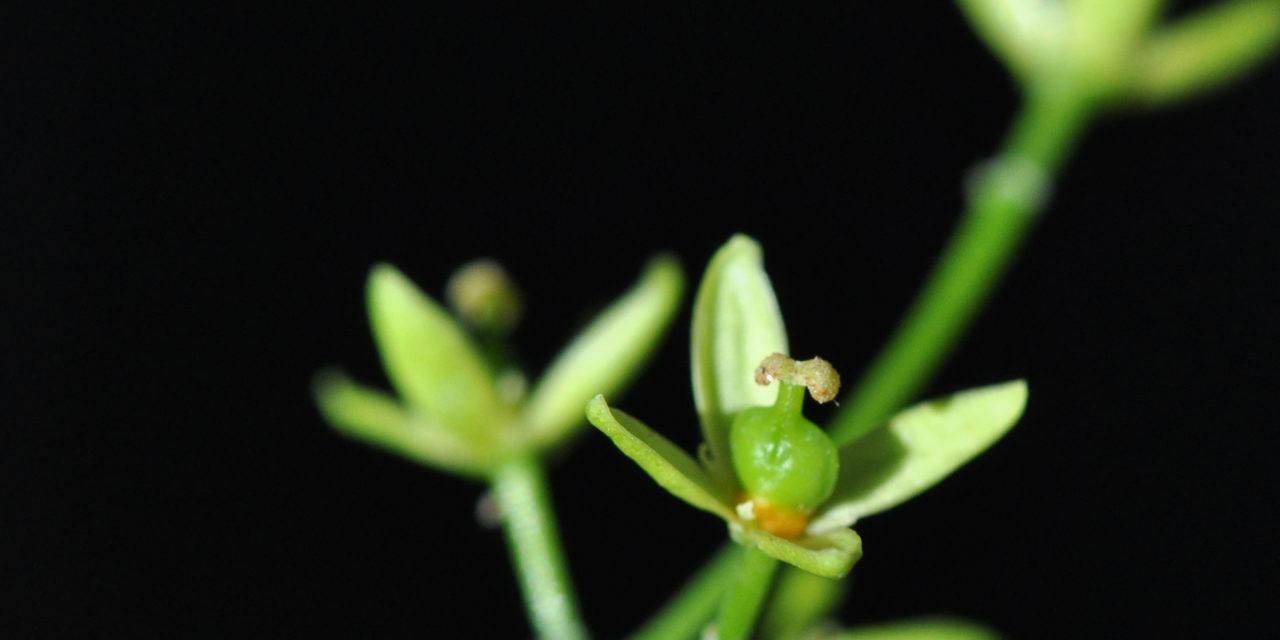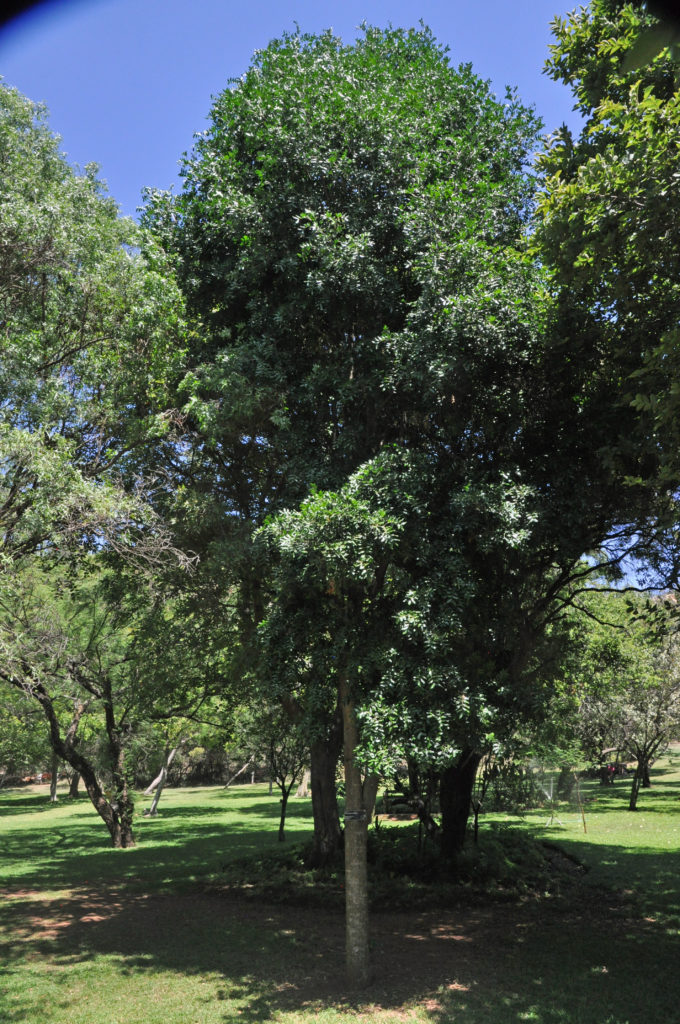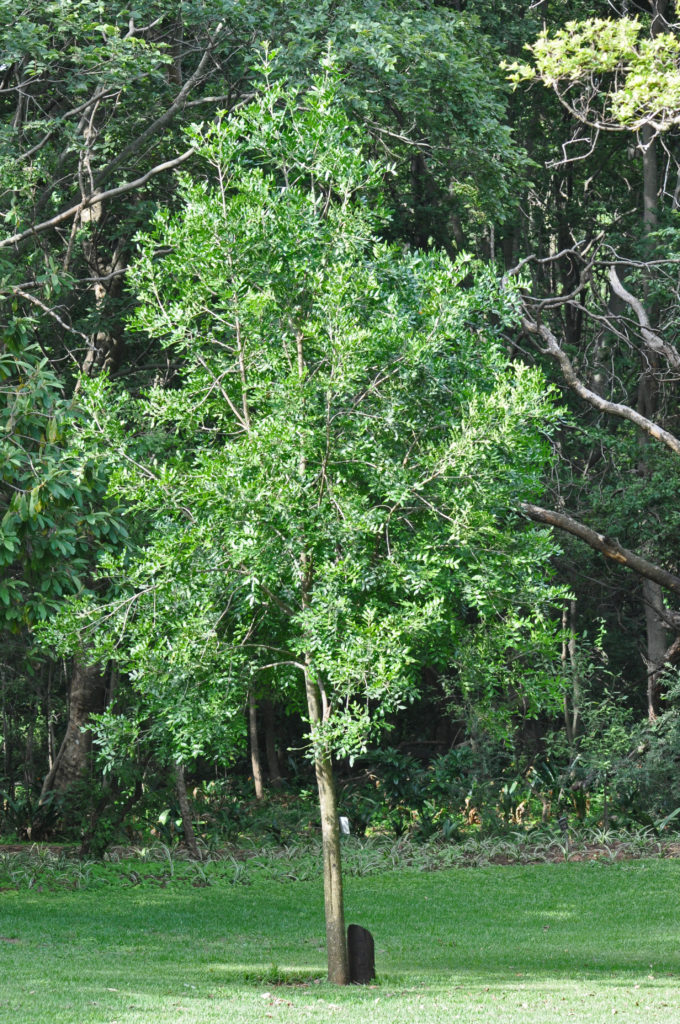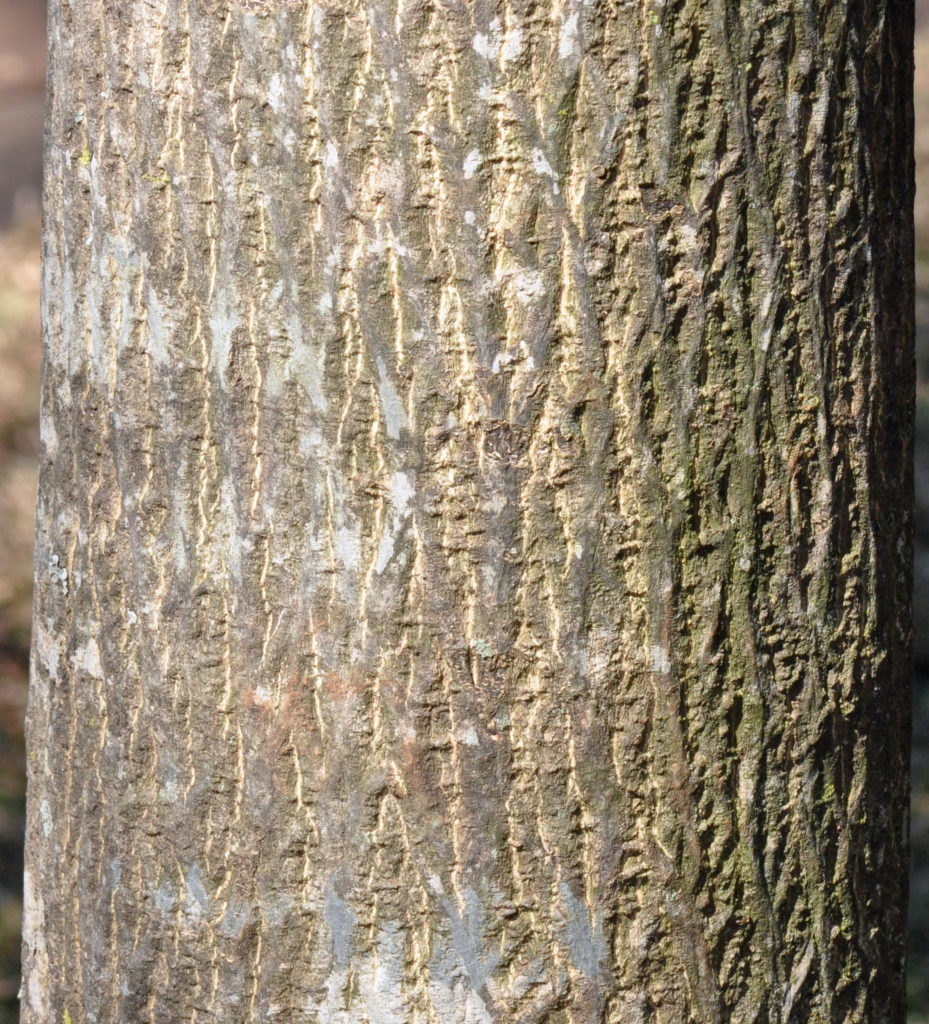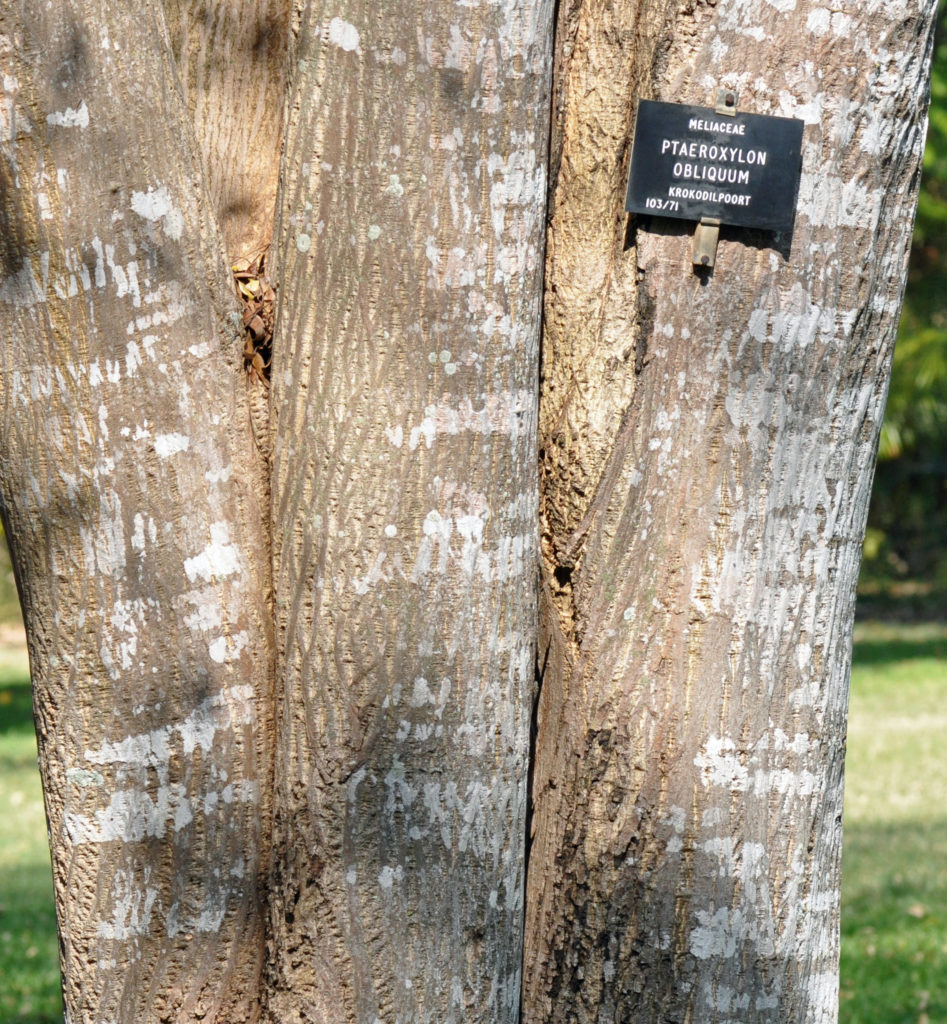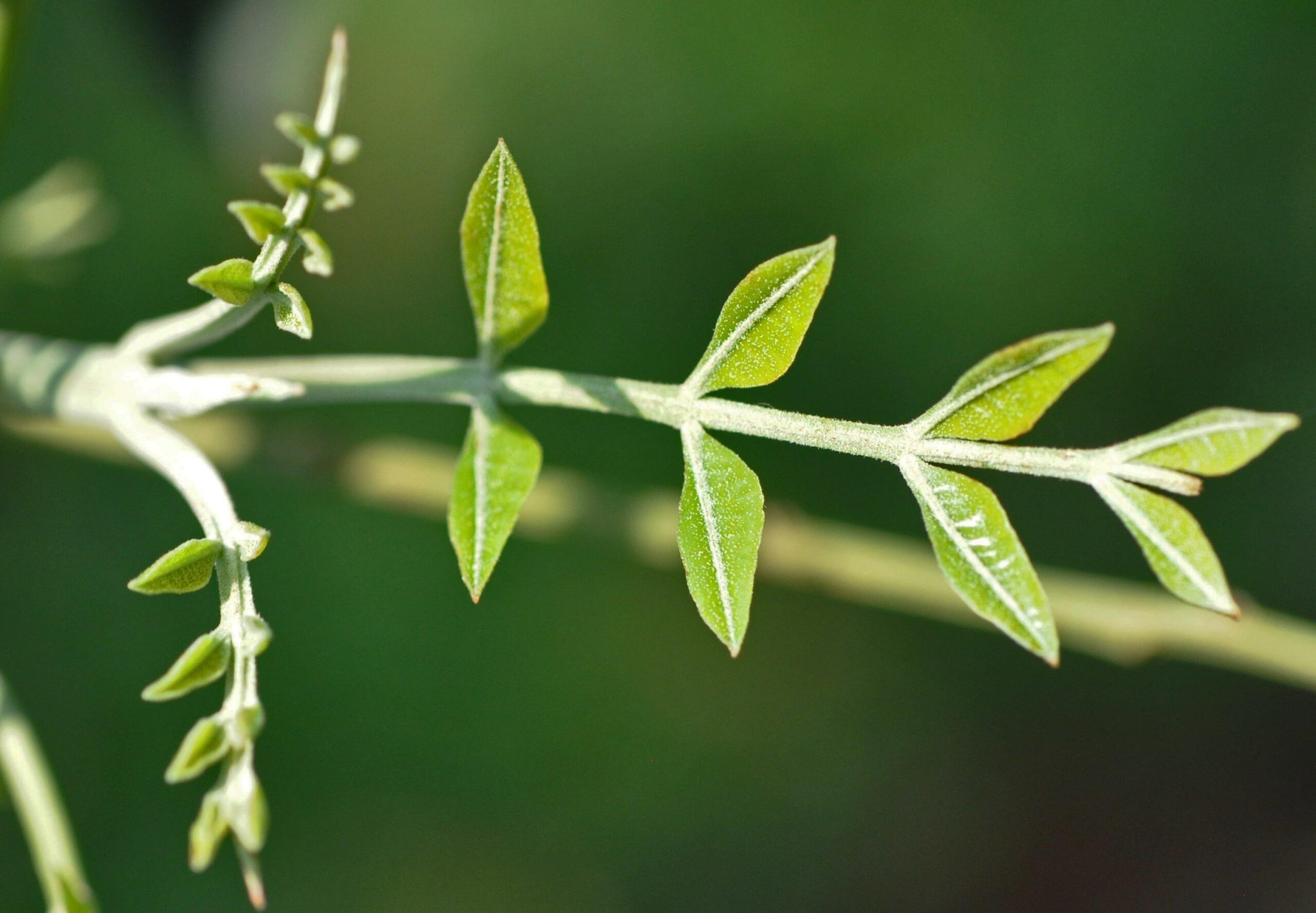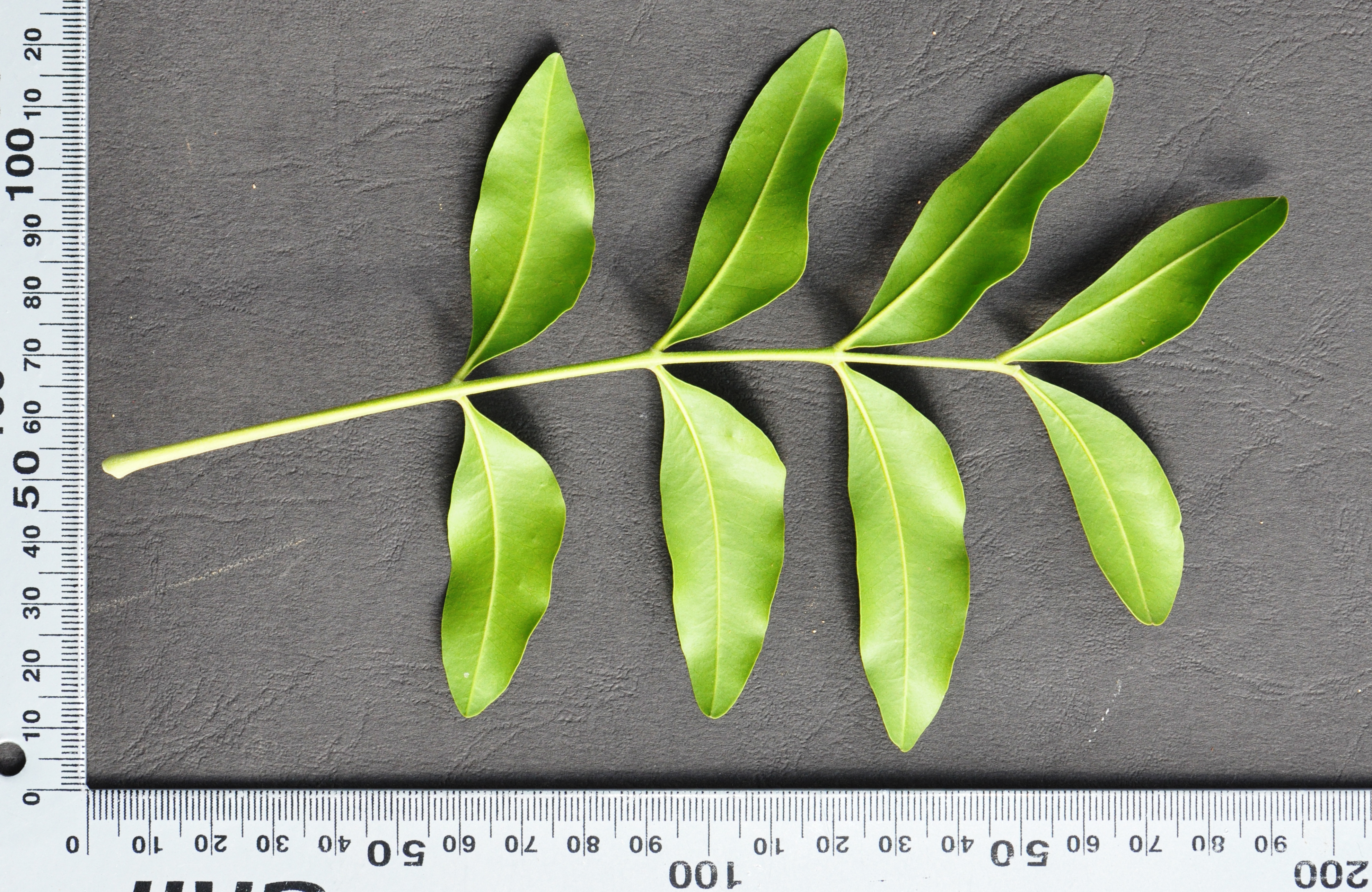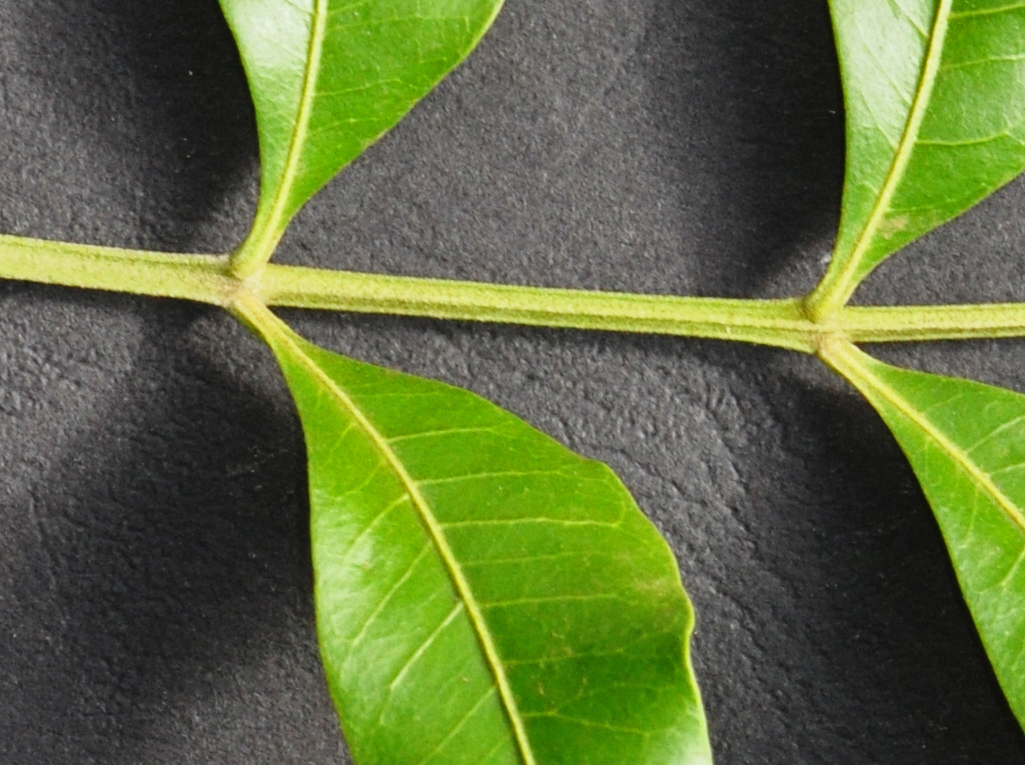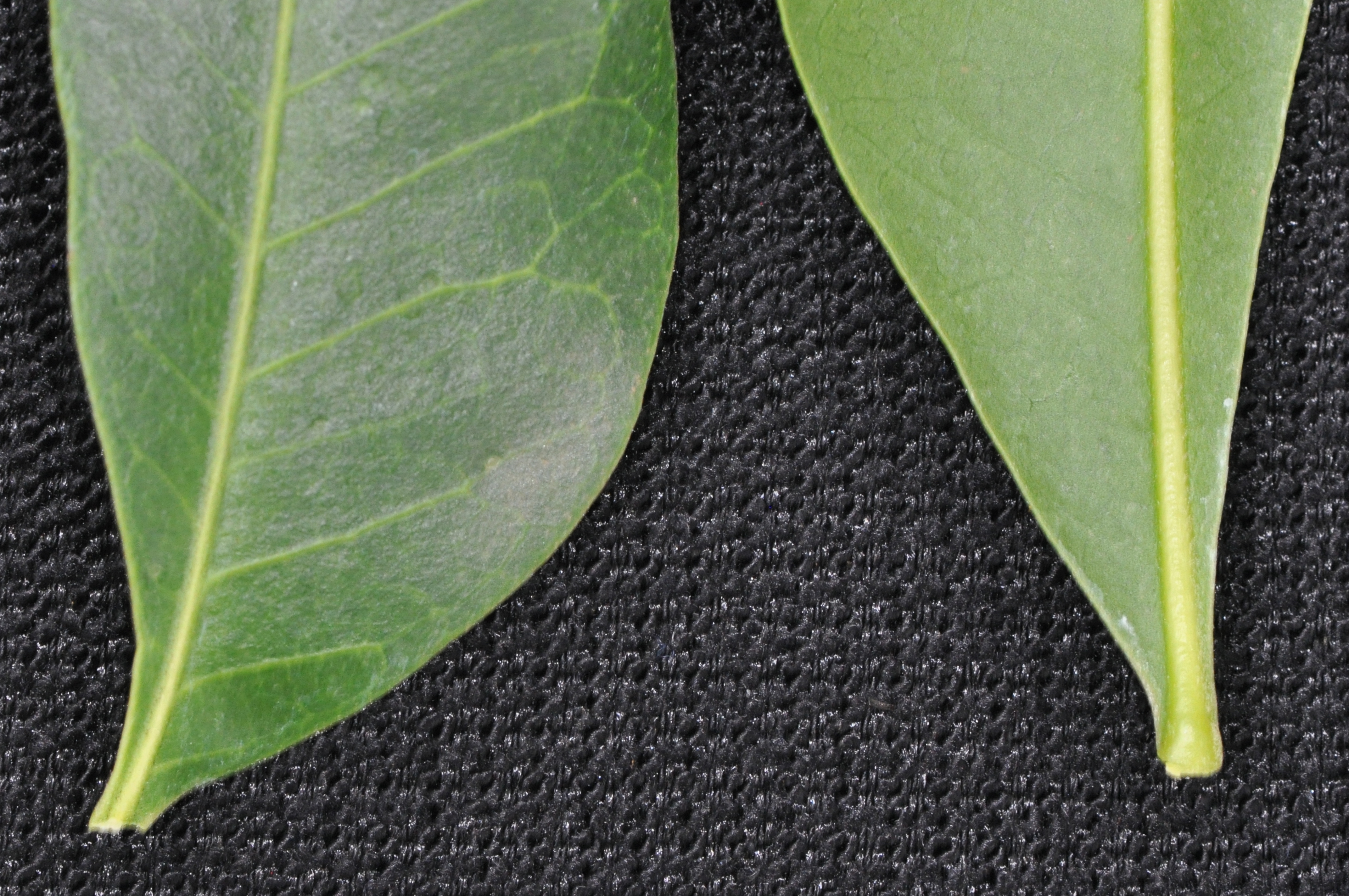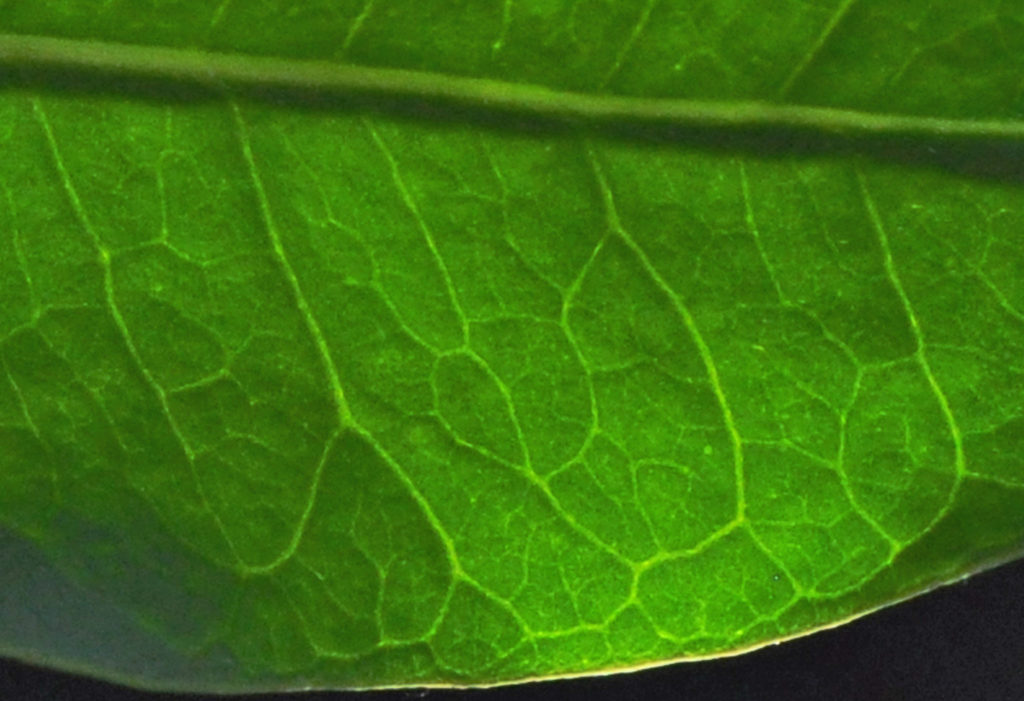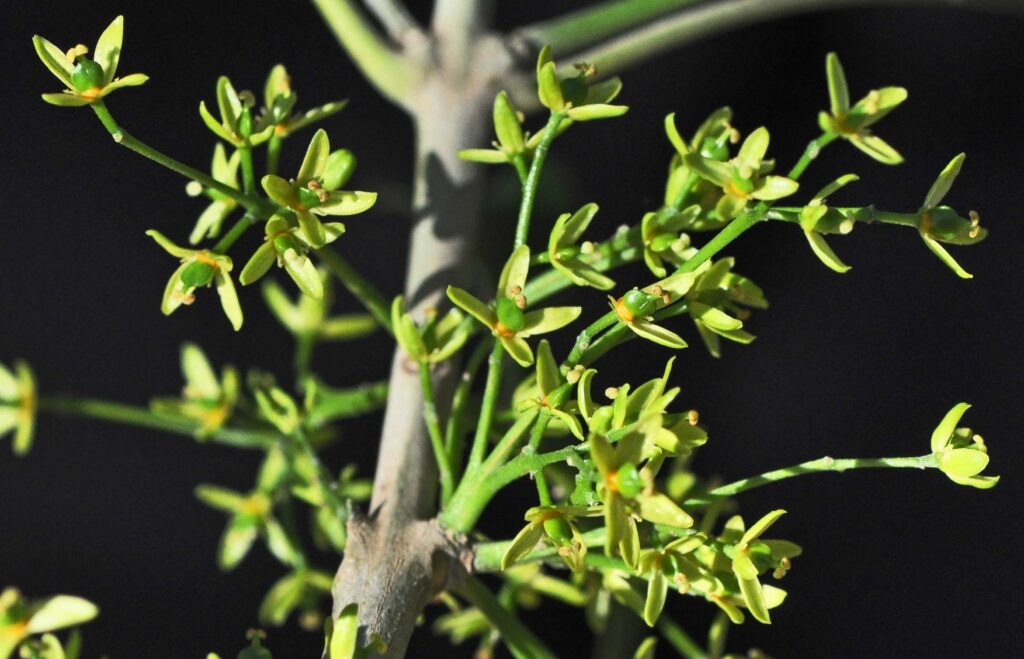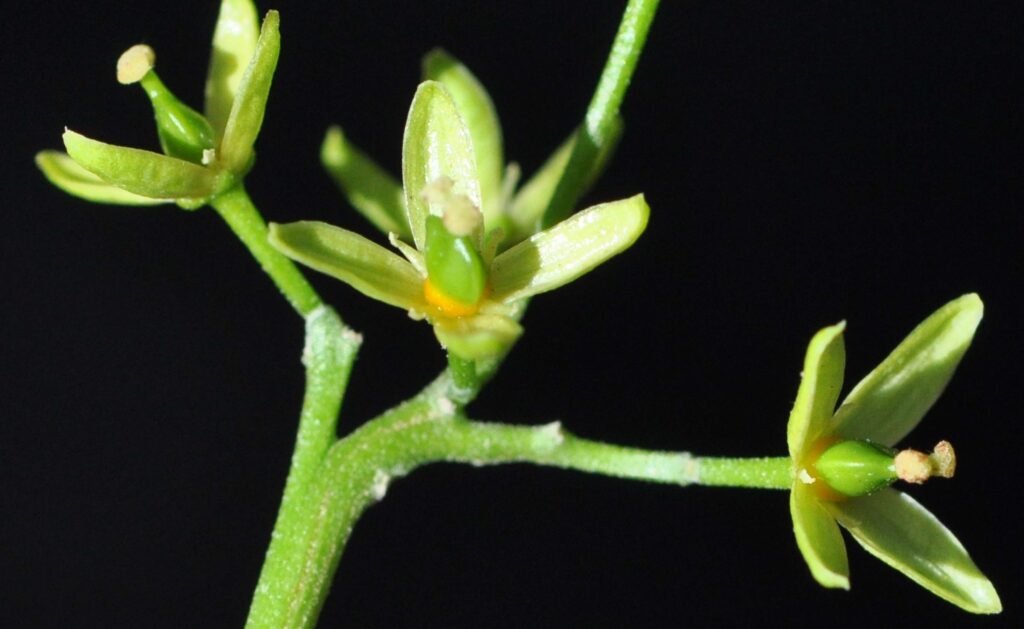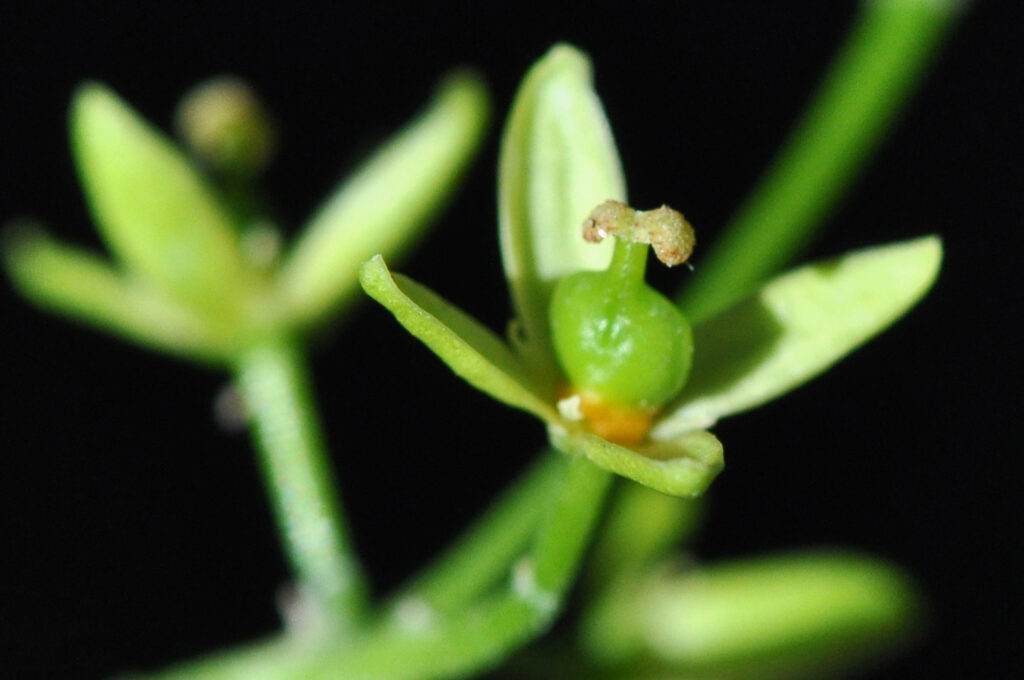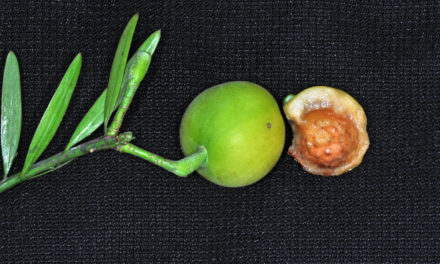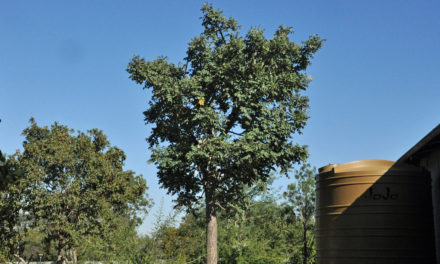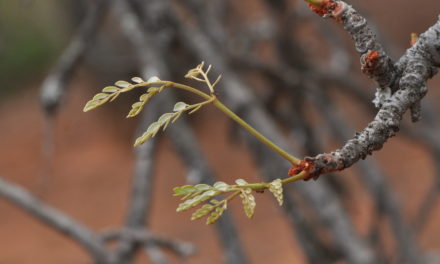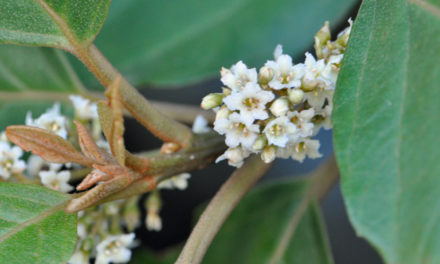General Info – summary
This dioecious Tree is up to 20m high or a multi-stemmed shrub. The paripinnate Leaves lack stipules. Leaflets are asymmetric with translucent dots. The small pale yellow, regular, 4-merous Flowers are actinomorphic. The male has 4 free stamens, and the female has a superior flattened ovary with 2 styles. Fruit: a small, apically notched & bilobed capsule with 2 light-winged seeds.
Description
Ptaeroxylon obliquum
Previous Name: Rhus oblique, Ptaeroxylon utile.
SA Tree No. 292.
Common names: (Afr) Nieshout. (Eng) Sneezewood. (isiXhosa) Umthathe, Umthathi, Umthote, Umpafa. (isiZulu) Ubhaqa, Umdiyaza, Umthathe. (Setswana) Ndzari, Tati, Thate, Anbhanddadzwidzw. (siSwati) Umbhandadzwidzwi, Umthathi, Umtsatse. (Tshivenda) Mulari, Munari, Munukha-vhaloi. (Xitsonga) Ambhandadzwidzwi.
Family: Rutaceae (Citrus family) has 160 genera and 2 000+ species. Leaves often have pellucid (clear, almost transparent in transmitted light) oil glands which are responsible for the aromatic smell. These gland dotted leaves are usually opposite and lack stipules. Most leaves are compound and lack stipules. The plants are usually monoecious. The regular Flowers are bractless, bisexual or unisexual. They have 4-5 Petals, which are usually free. The Stamens have anthers that are dorsifixed and 2-thecous (have 2 pollen sacs). Staminodes are often present. The Ovary usually has 5 carpels and the Style is simple. Fruit is variable. This family has 23 species in Africa. The Rutaceae in southern Africa are largely concentrated in the Western Cape. Indigenous genera with trees on this website include Calodendron, Ptaeroxylon, Vepris and Zanthoxylum. Calodendron is the only indigenous genus of this family to have large flowers.
Name derivation: Ptaeroxylon – sneeze + wood – referring to the effect of cutting the wood. obliquum – oblique – referring to the lob-sided, asymmetric leaflet bases. obliquum is the only species in the genus Ptaeroxylon.
Conservation: National Status: L C. (Least Concern). Assessed: 2005 (W. Foden and L. Potter). This is a protected tree in South Africa.
Tree
This usually single stemmed Tree (photo 778) is up to 20m tall in forests, with a rounded crown in high forests. In dry areas, it may also be small shrub with an inverted cone shaped crown, or it is multi-stemmed. The pale grey or pale green Bark is initially smooth. As the tree ages, it may flake and become darker and longitudinally fissured (photos 998 & 743). In the forest, the Trunk (photo 782) may reach a diameter of 1,2m.
- 782 2015/11/10. Walter Sisulu NBG. Photo: David Becking.
- 778. 2014/11/18. Walter Sisulu NBG. Photo: David Becking.
- 998. 2014/08/05. Walter Sisulu NBG. Photo: David Becking.
- 743. 2014/08/05. Lowveld NBG. Photo: David Becking.
Leaves
This tree may be deciduous. If so, the leaves turn an attractive golden yellow, rusty red or bronze before falling. Leaves are up to 15cm long and occur towards the ends of branches. Crushed leaves are unpleasantly scented. The compound leaves are opposite or nearly so and paripinnate (pinnately compound leaf ending in a pair of leaflets – photo 774). The opposite leaves help with identification. Each leaf has 3-7 pairs of Leaflets. These paired leaflets are opposite or nearly so (photo 777) and only hairy when young (photo 583). They are up to 6 x 2,5cm, dark shiny green above, lighter below (photo 774). With the exception of the terminal pair, the biggest leaflets occur towards the leaf apex. Secondary veins are visible and protrude slightly above (photo 255). These veins are also somewhat visible below. Details are best observed when the leaflet is held against a strong light (photo 47). Here translucent gland dots are also visible. In the field, a hand lens will help. The yellow Petiole (leaf stalk) is up to 5,5cm long. Petiolules (stalks of leaflets) are very short or absent (photo 777). The Rachis (main axis bearing flowers or leaflets) may be slightly winged and slightly rectangular in cross section (photo 777). The Base of each leaflet distinctly asymmetric (not equal to the opposite side – (photo 255). The Apex is broadly tapering to rounded and may be notched. In young leaflets, the apex is distinctly pointed (photo 583). The Margin is entire (a continuous margin, not in any way indented). Stipules (basal appendage of the petiole) are absent.
- 583. 2016/09/27. Walter Sisulu NBG. Photo: David Becking.
- 774. 2014/11/18. Walter Sisulu NBG. Photo: David Becking.
- 777. 2014/11/18. Walter Sisulu NBG. Photo: David Becking.
- 255. 2016/02/23. Walter Sisulu NBG. Photo: David Becking.
- 47. 2016/01/05. Walter Sisulu NBG. Photo: David Becking.
Flowers
The tree is dioecious (unisexual floral structures with male and female parts on separate plants). The tiny, white to pale yellow, scented and 4-merous Flowers are actinomorphic (Regular, symmetrical. The scented flowers are vertically divisible into similar halves by more than 1 plane passing through the axis). They consists of numerous branching clusters of individual flowers arising from a single main stem – photo 423). Each flower is about 8mm wide. The Pedicel (stalk of a single flower) is up to 6mm long (photo 425). The Calyx has 4 minute Sepals (photo 425 – upper left). The Corolla has 4 yellow-green, free Petals that are small – up to 3,5mm long. There is a fleshy, annular intra-staminal Disc (a more or less fleshy or elevated development of the receptacle) present (orange in photo 425). In the Male Flowers, the 4 free Stamens arise at the base of the disc. They are about 3,5cm long and protrude beyond the petals. The ovary is vestigial (imperfectly developed). In the Female Flowers, the superior, 2-chambered, laterally flattened Ovary (photo 425) also arises on the disc. Two Styles emerge from the 2-chambered ovary each with a capitate (formed like a head) Stigma (photo 425). There are rudimentary Staminodes (sterile stamens) present (photo 425). In spring, the flowers may occur in abundance either before or with the new leaves (photo 423). (Aug-Dec).
- 423. 2017/10/10. Walter Sisulu NBG. Photo: David Becking.
- 425. 2017/10/10. Walter Sisulu NBG. Photo: David Becking.
Fruit
The much veined, oblong Fruit is a small, apically notched, low density, 2-lobed Capsule (a dry fruit resulting from the maturing of a compound ovary) up to 2 x 1,5cm. This initially green then reddish-brown, apically notched and bilobed capsule has a cordate (heart-shaped) base (photo 427). When the capsule opens at the top, the 2 lobes part releasing the 2 light-winged Seeds – each up to 1,6 x 0,6cm. Open capsules remain on the tree for some months. (Nov-Mar).
- 427. 2017/10/10. Walter Sisulu NBG. Photo: David Becking.
Distribution & Ecology
Diverse, widespread habitats include coastal forests, bushveld and coastal and montane areas. The Tree is less common in woodland and scrub forests and more common in evergreen forests, on rocky outcrops and mist belts, up to an altitude of 1 400m. Here it reaches its largest size. These trees can withstand a moderate frost and are drought resistant. Trees seem to grow best in shale and are widespread in scrub bush and forests. This plant was first discovered in the Eastern Cape and is very common near Humansdorp. It was later found in the Western Cape, KwaZulu-Natal, Mpumalanga (in Kruger they only appear as shrubs), Limpopo, Northern Province, Swaziland, Zimbabwe, Northern Botswana, Namibia, Angola, Tanzania, southern Mozambique and Zambia. This tree is endemic (restricted to a particular geographic location) in southern Africa. Kudu eat the Leaves, which are a source of food for larvae of the extremely widespread Citrus Swallowtail butterfly (Papilio demodocus demodocus). These larvae also feed on other plants including Vepris lanceolata and Hippobromus pauciflorus.
Ethnobotany
In South Africa, this was the tree of the year in 2001. Wood changes to brown or golden brown on exposure. It is an exceptionally attractive, very fine-grained with heartwood that has an oily, peppery odour. Sapwood is likely to decay but heartwood is very durable. Once seasoned, this is one of the hardest and most durable wood in the world. It is strong with distinct growth rings. The satin lustre of wood is impressive. Wood is used to make xylophones, for hut building and makes good furniture and excellent, long lasting, termite resistant railway sleepers. It was used to make machine bearings – which apparently lasted longer than brass or iron. Due to a high oil content, the wood is very inflammable and not used for fencing or for telephone poles. Sawdust may causes violent sneezing and may aggravate lung conditions. Wood density is more than that of fresh water. As a result, it will sink in fresh water. The live tree is subject to heart rot. The friction caused by rubbing dry wood can start a fire. The wood is excellent for a braai. Cutting wood releases dust with a highly irritant aromatic peppery oils, containing nieshoutol which may cause violent sneezing – hence the common name: Sneezewood. Collected fragments of wood have been used as insect repellents. Dichloromethane extracts of Roots, leaves and stems showed moderate in-vitro antiplasmodial (anti-malaria) activity. Resin from heated wood is added to cattle wash to helps kill ticks. The trees Grow easily from undamaged seeds – provided they initially have sufficient water. Growth rate is between 0,5 and 1m per year and plants can tolerate some drought and frost. Parts of the tree are widely used in local medicine and magic.
References
Boon, R. 2010. Pooley’s Trees of eastern South Africa. Flora and Fauna Publications Trust, Durban.
Burrows, J.E., Burrows, S.M., Lotter, M.C. & Schmidt, E. 2018. Trees and Shrubs Mozambique. Publishing Print Matters (Pty) Ltd. Noordhoek, Cape Town.
Bryant, C. Lombo, B. 2004. Trees of CC Africa, Double Story Books, Cape Town.
Coates Palgrave, M. 2002. Keith Coates Palgrave. Trees of Southern Africa, edn 3. Struik, Cape Town.
Foden, W. & Potter, L. 2005. Ptaeroxylon obliquum (Thunb.) Radlk. National Assessment: Red List of South African Plants version 2020.1. Accessed on 2022/04/16.
Lawrence, G. H. M, 1951. Taxonomy of Vascular Plants. The Macmillan Company, New York. Tenth Printing 1965.
Palmer, E. & Pitman, N. 1972. Trees of southern Africa. Balkema, Amsterdam, Cape Town.
Schmidt, S. Lotter, M. & McCleland, W. 2002. Trees and Shrubs of Mpumalanga and the Kruger National Park. Jacana, Johannesburg.
van Wyk, B. & van Wyk, P. 1997 Field guide to Trees of Southern Africa. Struik, Cape Town.
Woodhall, S. 2020. Field Guide to Butterflies of South Africa, edn 2. Donnelley, RR, China.
https://en.wikipedia.org/wiki/Ptaeroxylon
http://www.zimbabweflora.co.zw/speciesdata/species.php?species_id=137540
http://uses.plantnet-project.org/en/Ptaeroxylon_obliquum_(PROTA)
http://plantzafrica.com/plantnop/ptaeroxylonobliq.htm
http://www.dwaf.gov.za/events/Arborweek/trees/Sneezewood.asp
http://www.biodiversityexplorer.org/butterflies/papilionidae/papilio_demodocus.htm
Ptaeroxylon obliquum | PlantZAfrica (sanbi.org)

